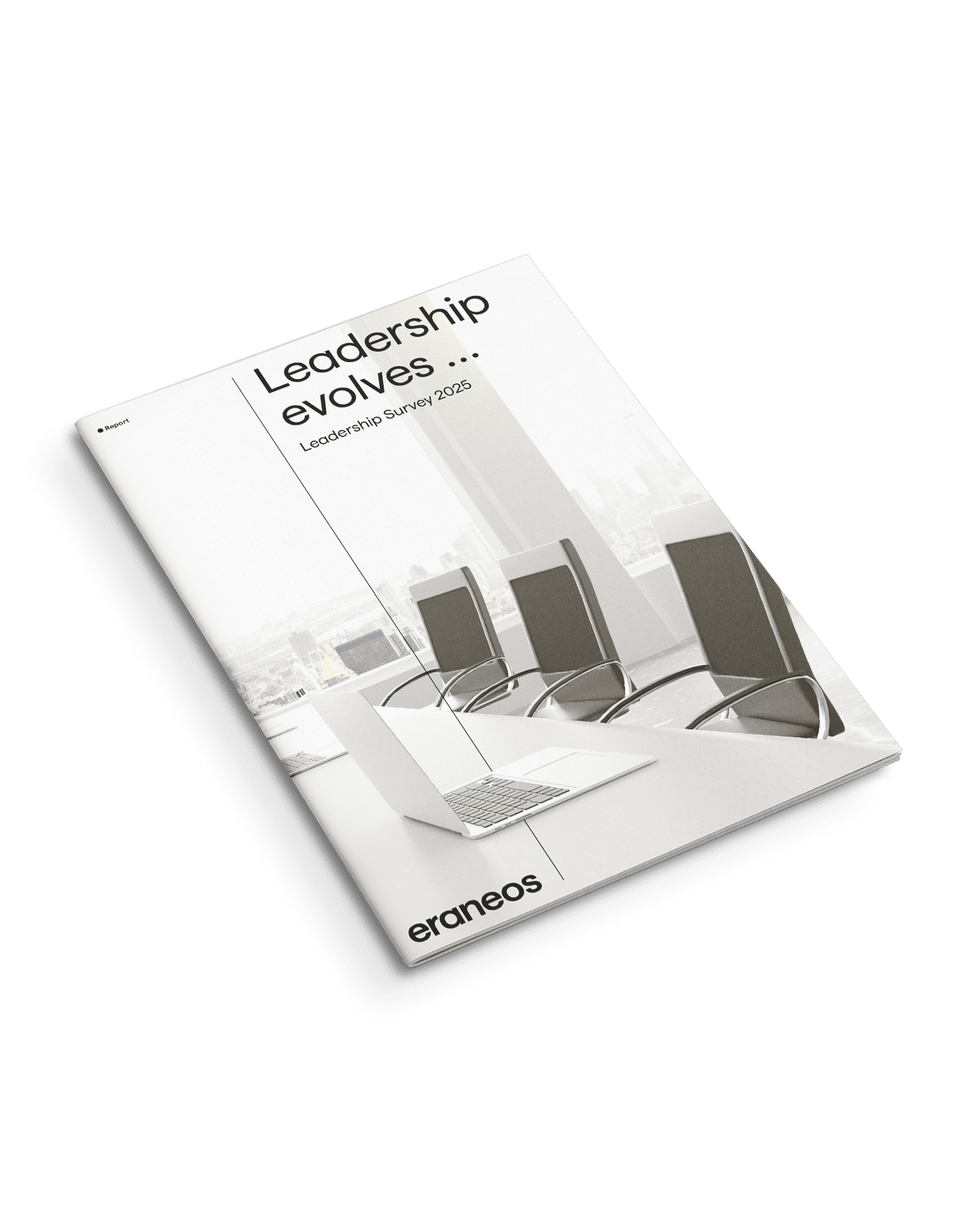About this series: In 2024–2025, Eraneos conducted research into the behaviors of effective leaders. Based on the insights gathered, we created a five-part article series exploring what today’s leaders need to truly make an impact.
In this fourth part, we focus on another critical leadership behavior that emerged from our research: the ability to define and organize around value streams. Eraneos carried out research into key leadership behaviors for 2024–2025. The results clearly show where leaders must grow to guide their organizations through complex transformation. One essential capability stands out: structuring work to deliver customer value faster and with more satisfaction by truly organizing around value streams.
In today’s fast-moving markets, delays and inefficiencies simply aren’t an option. Yet, our research shows that just under 60% of respondents believe their leaders are truly organizing around value streams, leaving significant room for improvement and highlighting persistent functional barriers inside organizations.
Defining Value Streams
A value stream is the sequence of activities needed to fulfill a customer request, from start to delivery. While this sounds straightforward, many organizations struggle to define their value streams effectively. This difficulty usually stems from viewing value streams mainly through an internal lens, rather than from the customer’s perspective. When properly defined, value streams clarify what work must be done, in which order and at what time, to ensure customer value is delivered as efficiently as possible.
Faster: Organize for flow, not function
To respond quickly to customer needs, leaders must design organizations where value can flow with minimal obstacles. Traditional function-based structures rely heavily on handovers and are prone to slowing value delivery. Modern organizations increasingly turn to multidisciplinary teams to cut through silos and bring together all skills required to address customer needs rapidly. This approach not only speeds up delivery but also fosters collaboration and shared ownership.
Mapping out value streams is a powerful way to reveal how an organization interacts with its customers and operates internally. The first step is always to identify the end customer and understand what they truly value. Clearly define where each value stream begins at the customer’s request and where it ends when that request is fulfilled. Involving colleagues from different parts of the company gives a more accurate and complete picture.
Leaders benefit from understanding both the customer journey and the employee experience. By clearly identifying process steps, key roles, and major handovers, leaders can see where delays, rework, or misunderstandings might occur. Visual tools, such as value stream mapping, help expose hidden bottlenecks and sources of waste. These maps should always be based on real process data and direct observations.
Just under 60% of leaders truly organize around value streams, leaving significant room for improvement and highlighting persistent functional barriers.
Overcoming the challenges of value stream leadership
Transitioning to a value stream mindset is not without challenges. The shift threatens established power structures and roles, making it a deeply political undertaking. Only senior leaders possess the authority to drive such fundamental change, but they must also ensure they’re connected to daily realities, not just high-level strategy.
Another trap is adding new layers of management around value streams. While structure is important, unnecessary bureaucracy slows progress and stifles collaboration. Effective value stream leadership means working together across functions without creating extra distance between teams and customers.
The third challenge is perhaps the most critical: performance measurement. Value streams often cut across multiple teams and departments, each with its own metrics for success. But what matters most to customers is how quickly and reliably their needs are met, not which department performed best internally. Leaders must therefore shift their focus to end-to-end measures of value delivery, and encourage teams to be judged on collective outcomes rather than separate achievements.
A value stream mindset unlocks real value
By embracing a value stream approach, leaders give their organizations the ability to focus on what truly matters: the swift, reliable delivery of value to customers. This shift requires questioning traditional structures, rethinking roles and responsibilities, and realigning performance measures around cross-team collaboration and shared results. When leaders make these changes, they unlock better teamwork, reduce wasted effort, and ultimately deliver higher customer satisfaction.
Are you prepared to look at your organization from a different perspective, a perspective that ensures your customers get their value better and faster? Read more in part 5 about leadership improvement.

Leadership survey 2025: Leadership evolves …
Discover the latest leadership trends. Learn how modern leaders navigate technology, change, and people-centered transformation. Request the report now!





